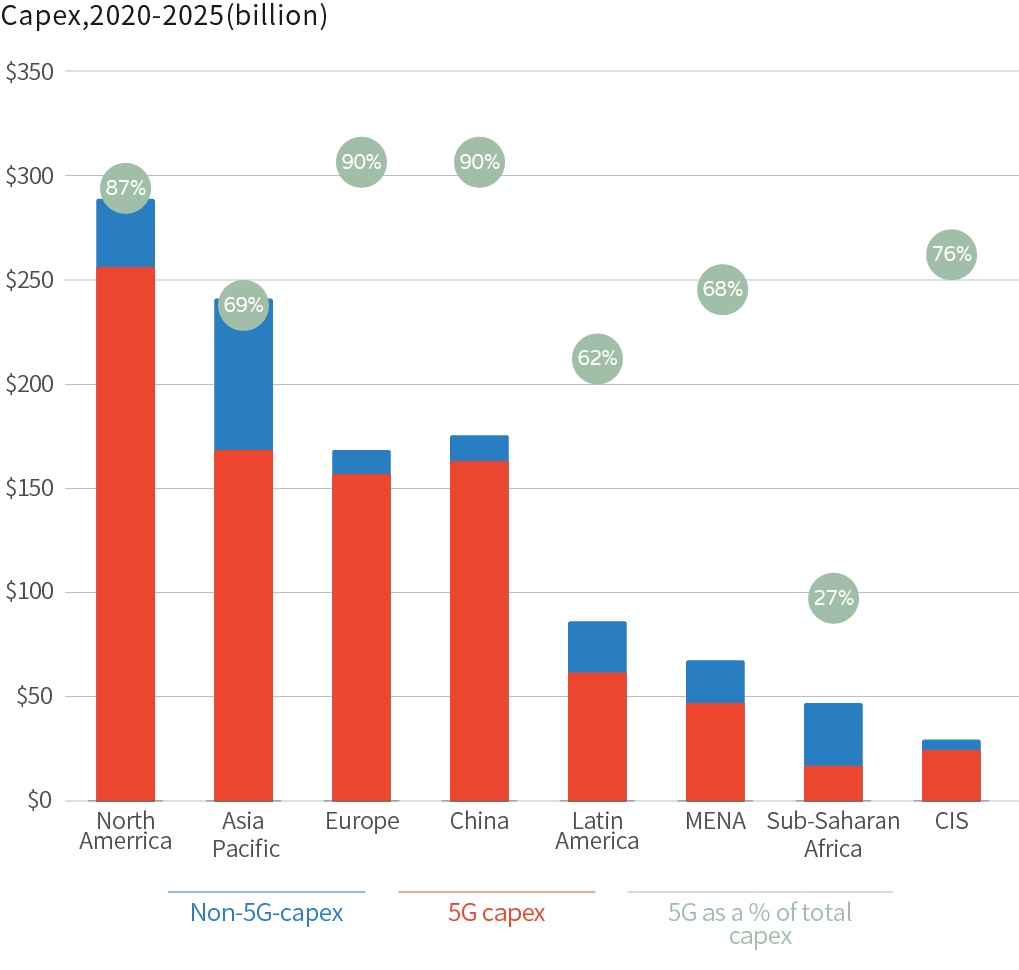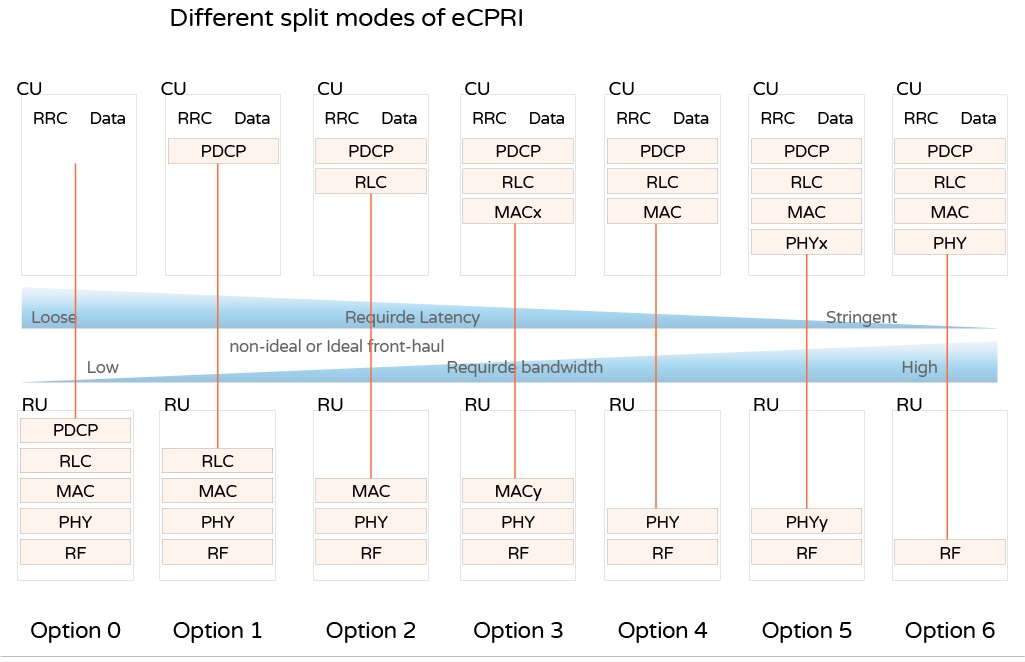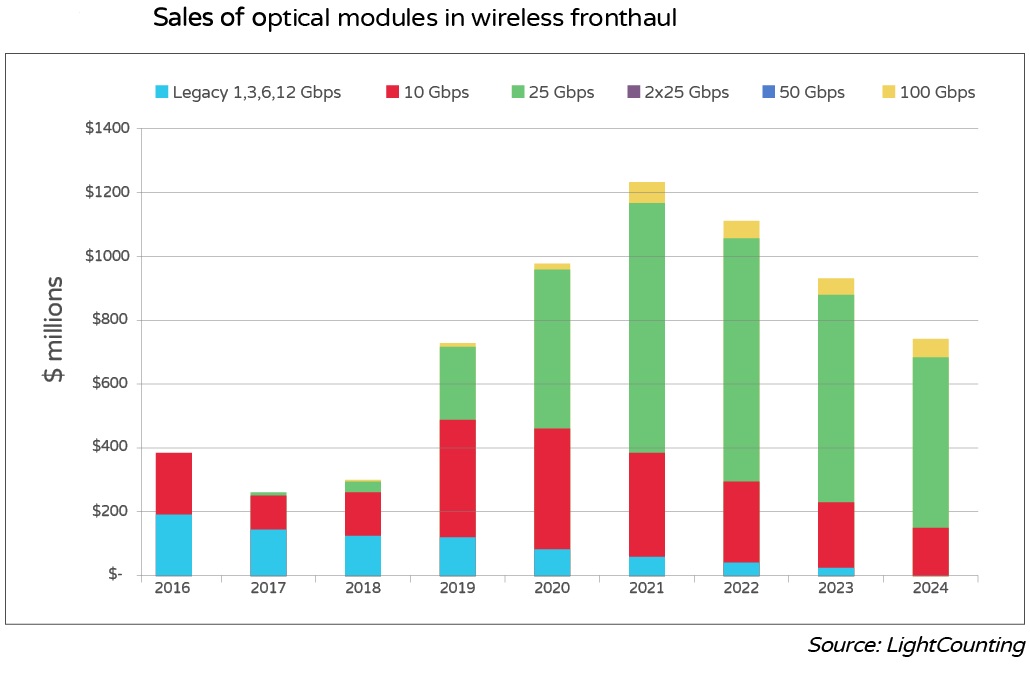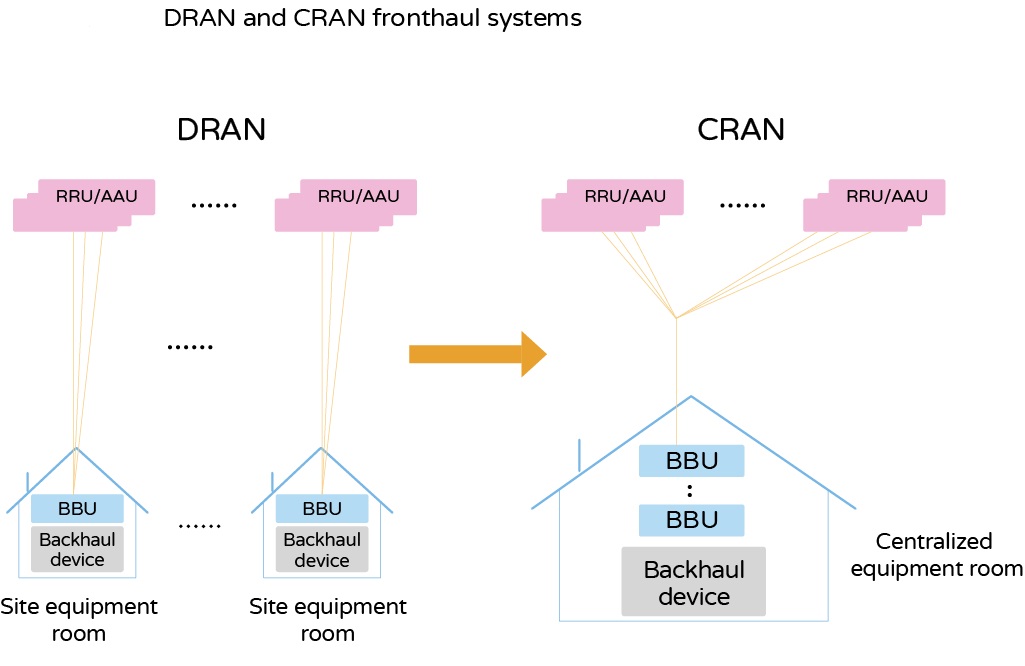|
5GLaunched in 2019, 5G quickly gained momentum in Asia, North America, and Europe. Global System for Mobile Communications (GSMA) predicts a continual growth of 5G connections in the next five years. Global operators will invest about US$1.1 trillion in mobile communications between 2020 and 2025, of which approximately 80% will be 5G CAPEX.
5G Wireless Fronthaul Interface5G wireless communication demands more spectrum resources than 4G, for enhanced mobile broadband (eMBB), ultra-reliable and low-latency communication (URLLC), and massive machine type communication (mMTC). Currently, 5G uses the sub 6GHz FR1 spectrum that supports a maximum bandwidth of 100Mb/s, five times that of 4G LTE. When there are 64 channels and the bandwidth is 100MHz, the common public radio interface (CPRI) protocol requires at least 100Gb/s for fronthaul channels. However, in 2017, the industry was not ready for 100Gb/s optical transceiver modules. Therefore, the enhanced CPRI (eCPRI) protocol was developed. The eCPRI protocol defines multiple split modes. An interface of a higher protocol layer requires a lower transmission bandwidth. In mainstream split scenarios, some physical-layer signal processing functions are transferred from the baseband to the antenna side, requiring only 25Gb/s from the fronthaul interface. In recent years, the requirements for mainstream fronthaul optical transceiver modules have evolved from 10Gb/s in the 4G era to 25Gb/s in the 5G era.
Considering that the low and medium frequency bands in the wireless spectrum are already crowded, 3GPP allocates a higher-frequency band for 5G. However, this results in a higher signal loss. Therefore, to ensure good communication quality, the construction of 5G base stations requires higher density than 4G, as well as higher optical transceiver module requirements. LightCounting predicts that of all optical transceiver modules sold in the next five years, over 50% will be 25G optics for 5G fronthaul.
25G optical transceiver modules are mainly used by wireless fronthaul. As such, reusing the existing resources in the 25G Ethernet industry can help telecom operators significantly reduce costs and enhance the efficiency of optical solutions. Typical 5G Wireless Fronthaul ScenariosThe typical architecture for wireless fronthaul is either distributed RAN (DRAN) or centralized RAN (CRAN). In CRAN mode, BBUs are located in a central office. This significantly reduces space and power consumption of auxiliary equipment, especially air conditioners, thereby lowering CAPEX and OPEX. In addition, centralized BBUs form a BBU baseband pool, which can be centrally managed and scheduled for different network requirements.
Due to added base stations, the cost of 5G network construction is much higher than 4G, and site acquisition is challenging. Therefore, CRAN is preferred for large-scale deployment. |







